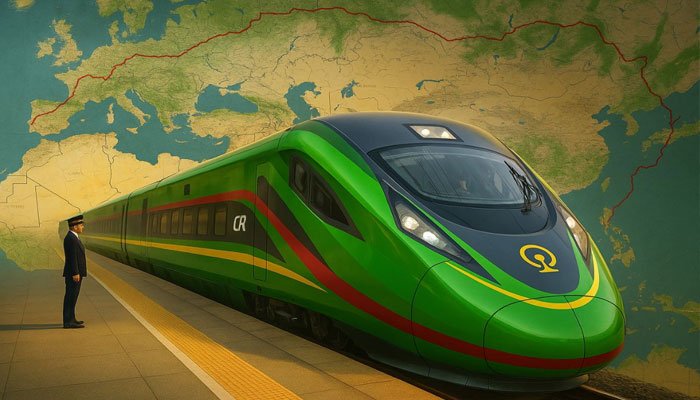Travel the World by Rail: 13 Countries in Just 14 Days. The world’s longest train journey is a remarkable concept that spans 11,654 miles, connecting the coastal town of Vila Real de Santo António in Portugal to the bustling city-state of Singapore. This ambitious route cuts across 13 countries and eight time zones, showcasing a sweeping view of geography, culture, and engineering progress. On paper, it takes approximately 14 days to complete—assuming flawless timing and perfect train transfers. But in reality, no traveler has completed the full journey.
A Route Made Possible by Modern Rail Links
The theoretical route became viable with the 2021 opening of the Laos-China Railway (LCR), a key link in Southeast Asia’s expanding rail network. This development bridged one of the final gaps between mainland Europe and Southeast Asia, sparking excitement among train enthusiasts and travel visionaries alike.
Starting in Portugal, the journey winds through Spain, France, Germany, Poland, Belarus (pre-sanctions), Russia, and then splits through either Mongolia or China. From there, it enters Southeast Asia via Laos, before continuing through Thailand, Malaysia, and finally ending in Singapore.

More Than 20 Train Changes & Numerous Challenges
While the idea is captivating, the journey is far from seamless. Travelers would need to switch trains more than 20 times. In many cases, these changes involve station transfers, border checks, long layovers, and occasionally even overnight waits. The complexity of arranging multiple tickets across different countries and rail operators adds another layer of difficulty.
Additionally, several critical routes—such as Paris to Moscow and Moscow to Beijing—are currently suspended due to geopolitical tensions and international sanctions related to ongoing conflicts. These disruptions make the full journey unattainable for now.
A Debate Among Rail Enthusiasts
The definition of the “world’s longest train journey” is also a point of contention. Some purists argue that combining dozens of individual train rides disqualifies the route from being considered a single journey. For them, the current record-holder remains the weekly Moscow-to-Pyongyang service, which lasts over seven days and nearly 8,000 miles—all on a single train without transfers.
The Appeal of the Impossible Journey
Despite these challenges, the dream of traveling from Europe to Southeast Asia by rail continues to inspire. The Portugal-to-Singapore route represents more than just distance. It symbolizes the rising interest in slow travel, environmentally conscious transport, and global rail connectivity.
For now, the journey remains a thought experiment—one that captures the imagination of travelers and transport enthusiasts alike. With future political cooperation and improved infrastructure, what seems hypothetical today may soon become a new benchmark in overland travel.







